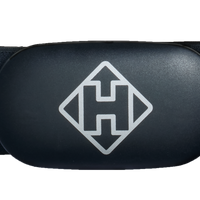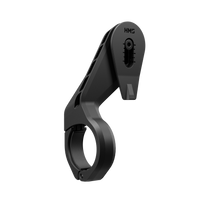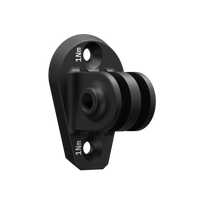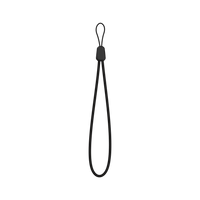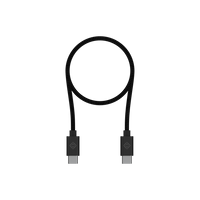Who, exactly, is Hammerhead? We get versions of this question often. We’d like to introduce our community to some of the names and faces behind the brand. This week, we tell the story of Robert, Hammerhead’s head of hardware engineering.
Commitment can’t easily be measured in units. Distance, however, can. On the relatively small but global team that Hammerhead assembled to develop Karoo, no member of the entourage pushed farther out of their comfort zone, in pursuit of delivering the best product possible, than Robert Martinez, Hammerhead’s VP of Hardware.
Born and raised in New Hampshire, Robert’s undergraduate education took him to Yale to study mechanical engineering. While there he was also on the rowing team, and thus, a teammate of Hammerhead’s future co-founder and CEO, Piet Morgan. The two competed through several successful seasons together before graduating, but at the time, neither had any idea that their paths would become thoroughly intertwined again, years down the road.

2006. Future Hammerhead co-founder and CEO Piet Morgan, and Robert, second and third from the left, respectively. When this photo was taken, they hadn’t a clue they’d be working together across the globe only a few years later.
Robert graduated from college ready to jump into a career, but found himself as many of his generation did: freshly entering a job economy that was lukewarm at best. He eventually took a entry-level position at a data center in California, but knew that data science ultimately wasn’t for him.
 Rob with an AnyBots prototype in 2013.
Rob with an AnyBots prototype in 2013.
In 2010, he approached venerated computer scientist and entrepreneur Trevor Blackwell. Trevor invited Robert to visit his new venture, AnyBots, a burgeoning company in the process of developing wheeled telepresence robots that used internet connectivity to physically represent absent parties. The implications were tremendous: Doctors could oversee surgeries, mechanics could inspect machines, the physically handicapped could be enabled to travel virtually, and dangerous situations could be traversed by surrogate devices, rather than humans. Robert was intrigued, enough so that he took on an unpaid internship until AnyBots could create a formal position for him as a robotics engineer.
Unbeknownst to him, the engineering of these robots would provide a comprehensive foundation of experience that would deeply inform his work at Hammerhead later. Hardware considerations like weight, power consumption, heat management, design for manufacture and assembly, and more were critical to master. Robert also learned endless lessons in the balancing of marketing, timing, sourcing, vision, compromise, and other vital managerial and political skills.
Feeling spurred to take on his own venture, Robert eventually left AnyBots and partnered with a college friend to found SupplyBetter, an organization that paired hardware startups with ideal suppliers and manufacturers. The work was rewarding, but demanding, and Robert was exposed to deep, systemic challenges in integrating young companies with vendors — yet more experience that would be pertinent in due time.
By now, Robert was living in the San Francisco Bay area, in what could only be described as an unconventional arrangement. He and about a dozen others were living on an enormous, permanently docked cargo ship that had been converted into a floating residential experiment. It had its advantages — a strong sense of community, a relative escape from the hectic city — and uniquely, the opportunity to tackle various engineering projects all over the craft. One such challenge Robert took on was building the davit for the ship’s two 13-foot inflatable dinghies (one of which was called #sorryrob). Robert did work on both, and used them for travel around the bay, making for some very non-traditional commutes.

Robert exploring the SF Bay in 2016.
Back to His Roots
After three years in vendor relationship management, Robert dearly missed the hands-on engineering work he got to only taste living on the ship. He made a list of companies for whom he’d like to try working. Seeking some advice, he reached out to Laurence Wattrus, co-founder of Hammerhead, who’d become a client of SupplyBetter a year earlier.
Robert was only vaguely aware of Hammerhead’s focus as a company, as a result of a few conversations he’d had with Laurence and Piet. “Piet originally called to ask me about CAD tools and some other hardware-related questions,” recalls Robert. “I didn’t really know the specifics, but I always knew he was up to something.”
Once on the phone, Laurence made it clear to Robert: “I’m not giving you any advice. I want you to come work for us.”

Left: Robert in Hammerhead’s first offices in 2013. Right: Laurence, Piet, and Robert each stand at 6’5”/195cm or taller, making for a tight fit in a tuk-tuk in Bangalore, India, in early 2018.
Robert accepted the role as VP of Hardware at the time that Hammerhead’s development of Karoo was really picking up steam. A deft hand was needed to sort out a wide variety of new vendor relationships. He began making trips to Shenzhen, China, the world’s foremost hub of mobile device manufacturing, where the company planned to produce the device. After only a few weeks on the job, Robert’s prior experience quickly informed him of the reality of Hammerhead’s situation: someone needed to be present in Shenzhen to make this all work properly, not just coordinating remotely and visiting only occasionally.
On one of his early trips to Shenzhen, Robert’s then-fiancé, Elyse, had come to visit him. The two had become engaged only weeks after Robert was offered the position at Hammerhead, and determining their near-term plans together was still an active topic of conversation. Elyse joked with Robert that they should just move to China to make his job easier. Two months later, in August of 2016, they were living in Shenzhen.

Robert and Elyse in Hong Kong in 2017.
“I wouldn’t necessarily recommend moving to a completely foreign country with no personal connections and no ability to speak the language, two months after getting engaged,” quips Robert. “Every day was an adventure, whether you wanted one or not.”
But neither he nor Elyse, nor their dog (and unofficial company mascot) Griz, regret their bold move. Their lives are richer for it, and Hammerhead has unquestionably benefited enormously from Robert’s — and Elyse’s — willingness to upend their lives.

Griz stands guard over a pre-production Karoo mold in Shenzhen, 2016.
Setting the Stage to Change Cycling Tech
Once on the ground in China, Robert simultaneously accelerated and refined the processes that were shaping Karoo’s hardware story. He streamlined vendor selection, negotiated contracts, identified various component manufacturing partners, and helped design and engineer Karoo itself. He found Hammerhead’s collective vision and its daunting quest to develop something genuinely revolutionary invigorating.
“It can take years to modify existing supply chains and vendor relationships to create a new product– often called technical debt — which is directly tied to the success of your product,” says Robert. “We don’t have those confinements. We’re starting from scratch. We can be nimble, but there’s also a lot of risk.”

At left, one of many product tear-down sessions that Rob and the hardware team conducted before designing Karoo. At right, one of the earliest schematics of an assembled Karoo.
Mitigating that risk was a major focus for the hardware team, and it paid off. By the time production of the device itself was underway, beginning in the winter of 2017, a remarkable piece of hardware had come to life. Karoo’s initial run defect rate was extraordinarily low — an unprecedented success for a relatively tiny company taking on a significant challenge like reimagining what a cycling computer should be.

Like everyone at Hammerhead, maintaining a connection to nature is important to Robert. When asked about cycling, he admits he doesn’t have the time or access to do as much as he’d like in Shenzhen. But as a former collegiate athlete, he understands the importance of the mission that Karoo is serving.
“Training and racing performance are being influenced by how well we can integrate sensors on the market, whose costs keep decreasing,” says Robert, referring to the myriad of products on the market these days, which no manufacturer has properly achieved seamless integration yet into the cycling experience. “It’s a fundamentally exciting time to be an engineer in the industry right now.”
And it is an exciting time to be a cyclist, too, thanks in large part to the work of those like Robert.

